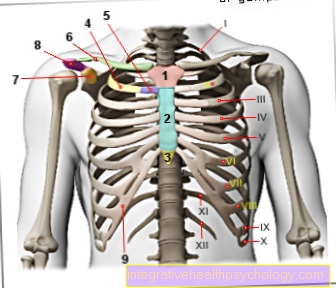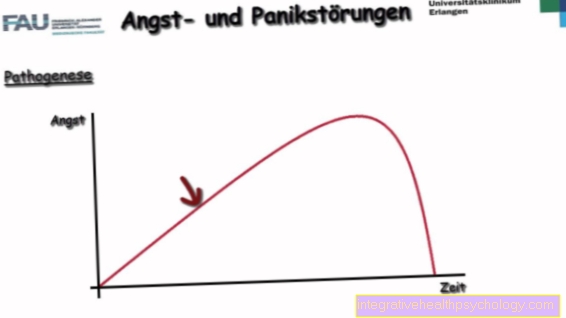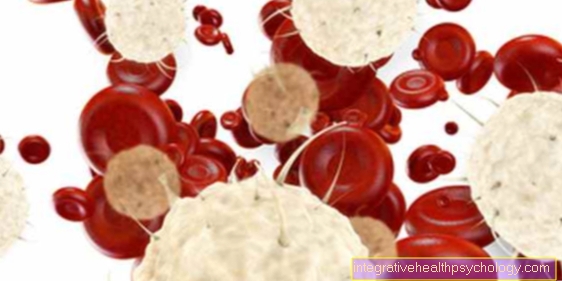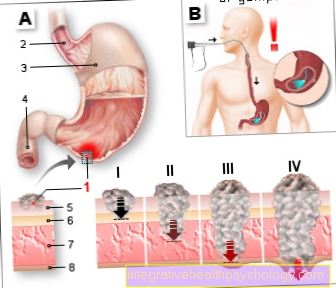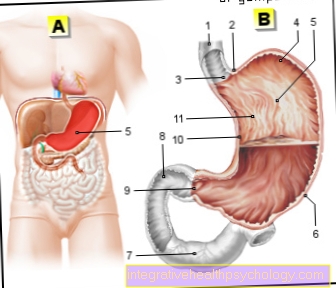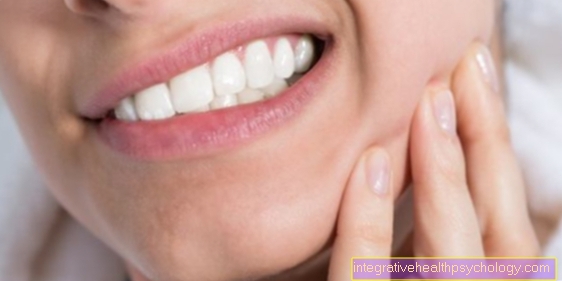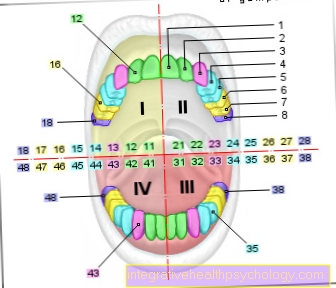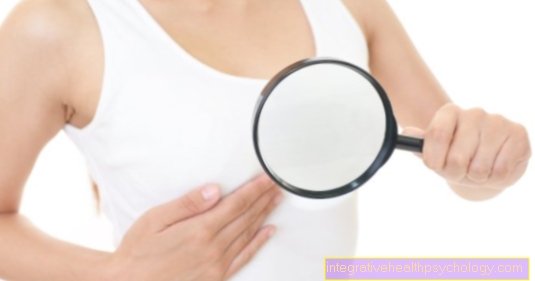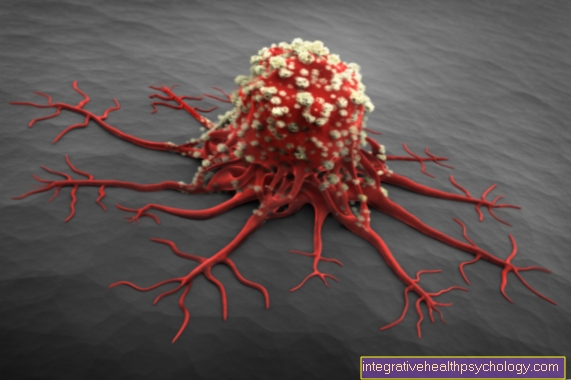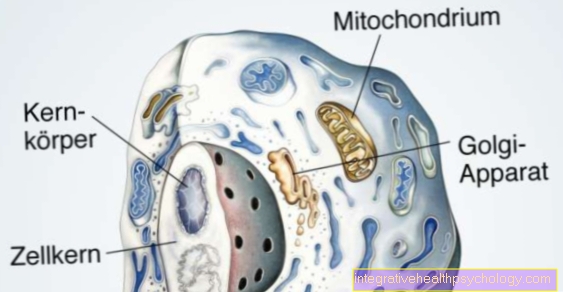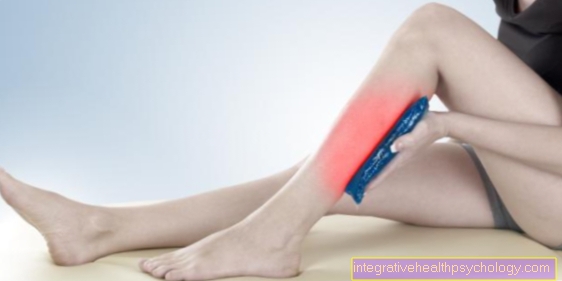Vitamin D
To overview: Vitamins
Synonyms
Cholecalciferol
Occurrence and structure
Cholecalciferol / Vitamin D is the preliminary stage of Calcitriol. It will be out cholesterol synthesized. The cholesterol is in the skin by exposure to sunlight (therefore UV light-related) split and so on Cholecalciferol, actually Vitamin D.
However, the active form is Calcitriol, whose chemical name is actually 1,25 - dihydroxycholecalciferol. Which means that the cholecalciferol formed from cholesterol occurs in two places (at C 1 and C 25) is hydroxylated (OH groups are added). This is done in liver and kidney.
The resulting calcitriol is active and acts as a hormone.
About 80% of vitamin D in the body become by him self educated. The remaining 20% should about the food be included. Vitamin D3 is in animal foods included, such as in fish, Eggs and milk. In contrast, comes Vitamin D2 mainly in plant foods, how Mushrooms, in front.
Just like vitamin D2, vitamin D3 is converted into the hormone calcitriol in the human body, which is why the vitamins are also known as the precursor of the hormone.
We would like to point out that on this topic a separate topic Diet for cholesteries was written.
Function of vitamin D.
Calcitriol plays an important role in the calcium and phosphate balance. There are three hormones that regulate the concentration of these two substances, some of which act in opposite directions in order to be prepared for any situation. So here is a short digression:
The parathyroid hormone is one of these three substances. It is synthesized in the parathyroid glands and released there when the calcium level in the blood is low. Once in the blood, it ensures that more calcium is provided both in the intestine and in the kidneys. This means that more calcium is absorbed in the intestine (taken from food) and less calcium is excreted in the kidneys. In addition, the parathyroid hormone releases more calcium from the bones. At the same time, however - contrary to this - it ensures the increased excretion of phosphate via the kidneys. Why? Calcium and phosphate form complexes (e.g. in the bone substance), such a complex formation in the blood would be extremely unfavorable, so that it is prevented by the increased phosphate elimination.
The antagonist of the parathyroid hormone is calcitonin. It is synthesized in the C cells of the thyroid gland and reduces the level of calcium and phosphate in the blood. On the one hand through their increased excretion via the kidneys, on the other hand through the reintroduction of the two substances into the bones. This is called mineralization of the bone.
The third in the league is calcitriol. It comes from the kidney, since this is where the last step of its activation described above takes place. Parathyroid hormone releases it more, so the two work hand in hand, so to speak. The calcitonin ensures that more calcium and phosphate are absorbed in the intestine and less calcium and phosphate are excreted in the kidneys. At the same time, it builds both back into the bone substance, which results in increased mineralization. The calcitonin thus works together with the parathyroid hormone by re-installing the calcium and phosphate that it stole from the bone and thus counteracting prolonged bone breakdown.
Every second German has a vitamin D deficiency. Therefore, doctors tend to advise everyone to have their vitamin D levels checked occasionally. Find out more at: Vitamin D rapid test - who should absolutely do it?
Short and sweet
Parathyroid hormone:? Calcium? Phosphate; Bone demineralization
Calcitriol:? Calcium? Phosphate; Bone mineralization
Calcitonin:? Calcium? Phosphate; Bone mineralization
dosage
Since only part of vitamin D is absorbed through food and the other part is formed on the skin itself through exposure to sunlight, it is difficult to determine a guideline value for a daily dose. The amount of vitamin D produced by the body itself depends on many factors, such as skin type, where you live, and sun exposure.
A daily vitamin D intake of 20 micrograms is recommended, although children and the elderly should consume more. For infants in the first year of life, half, i.e. 10 micrograms per day, is the recommended guideline value.
Also read: High-dose vitamin D - when useful, when dangerous?
By being in the sun for around 15 to 20 minutes a day, the skin can also produce some of the vitamin D itself. A longer unprotected stay in the sun is not advisable, because after 30 minutes at the latest so much vitamin D has been produced that production is stopped.
Regular visits to solariums in winter can also help keep vitamin D levels at a suitable level.
Every second German has a vitamin D deficiency. Therefore, doctors tend to advise everyone to have their vitamin D levels checked occasionally. Find out more at: Vitamin D rapid test - who should absolutely do it?
Overdose
An overdose of vitamin D is known as hypervitaminosis D. The likelihood of developing an excess of vitamin D is very small. So little of the vitamin is absorbed through food that it is almost impossible. Even massive sun exposure does not produce so much vitamin D that it leads to an overdose.
However, taking a large amount of vitamin D supplements can lead to a vitamin D overdose. In this case, more calcium is absorbed in the intestine, which can be detected in the blood, among other things. If the amount of calcium exceeds a certain value, cold deposits can form in the blood vessels or in the kidneys. Disorders in the gastrointestinal tract can also occur, manifesting as nausea, vomiting, constipation or abdominal cramps. Cardiac arrhythmias can also be triggered by an overdose of vitamin D.
In children, an overdose of vitamin D leads to stunted growth and a permanent increase in body temperature.
In extreme cases, too high a dose of vitamin D can lead to death.
Please also read our article on this Vitamin D overdose
Both the overdose and the lack of vitamin D can lead to diarrhea. Intervention by the doctor may be necessary under certain circumstances. Read more about diarrhea from vitamin D at: Vitamin D diarrhea-is it dangerous?
Deficiency symptoms
The daily requirement for vitamin D is taken in through food on the one hand, but is also produced by the body itself. In order for the body to be able to produce vitamin D, however, it needs the sun's rays on the skin. Even with a balanced diet, the amount of vitamin D that is ingested with food is usually insufficient to meet the daily vitamin D requirement. It is therefore very important to be outside enough to allow the body to produce itself. This is very difficult, especially in the winter months, and not enough sun can get on the skin to ensure this. This is the reason why many people suffer from vitamin D deficiency, especially in winter.
Vitamin D can only be formed when the skin is exposed to the sun without protection. It is therefore very important to find the right level of protection in summer and, if possible, to expose a large part of the skin to solar radiation for at least 10 minutes a day without sun protection. Since the pigmentation (tanning) of the skin is a natural protection against the sun, people with dark skin have to spend longer periods of time in the sun in order to be able to produce the same amount of vitamin D.
A lack of vitamin D often manifests itself initially in concentration problems, fatigue or sleep disorders. Muscle weakness and circulatory problems can also occur. The outer appearance is often characterized by thin hair due to hair loss and brittle fingernails.
Since vitamin D is important for building bones, a deficiency in vitamin D manifests itself in an advanced stage as osteomalacia. This is the softening of the bones, often noticeable by pain in the bones and limbs. This can promote osteoporosis. Morning stiffness can also be the result.
In adulthood, a lack of vitamin D often leads to increased osteoporosis. The bones become unstable and often break in severe forms (spontaneous fractures). Elderly people in particular are at risk of developing a vitamin D deficiency, as the self-production of the vitamin decreases with increasing age.
If children are deficient in vitamin D, rickets can develop. This deforms the bones and also the skull, since too little of the vitamin is available for proper bone structure. That is why pediatricians recommend a dietary supplement for infants, which is supposed to prevent rickets.
Since vitamin D is fat-soluble, it is absorbed by the body in the intestine along with fat. People who suffer from diseases of the gastrointestinal tract, such as Crohn's disease or gluten intolerance, can therefore absorb less vitamin D from their diet and are more at risk of developing a deficiency.
Vitamin D deficiency can also result from a lack of light exposure, as this is the only way to break down the cholesterol and ultimately convert it to calcitriol.
Every second German has a vitamin D deficiency. Therefore, doctors tend to advise everyone to have their vitamin D levels checked occasionally. Find out more at: Vitamin D rapid test - who should absolutely do it?
Read more on the topic: Vitamin deficiency and burning sensation in the legs
values
Scientists do not yet agree on the ideal value for vitamin D in the blood. However, a vitamin D level of over 30 micrograms per liter is recommended.
Especially after winter, but often even in summer, more than half of people between 18 and 80 years of age have a vitamin D value of less than 20 micrograms per liter.
In children, a value of 20 micrograms per liter prevents the development of rickets, but higher vitamin D levels are necessary to permanently lower the risk of cardiovascular diseases.
The value of a vitamin overdose is around 50 milligrams.
Every second German has a vitamin D deficiency. Therefore, doctors tend to advise everyone to have their vitamin D levels checked occasionally. Find out more at: Vitamin D rapid test - who should absolutely do it?
Overview of vitamins

Water-soluble (hydrophilic) vitamins:
- Vitamin B1 - thiamine
- Vitamin B2 - riboflavin
- Vitamin B3 - niacin
- Vitamin B5 - pantothenic acid
- Vitamin B6 - pyridoxal / pyridoxine / pyridoxamine
- Vitamin B7 - biotin
- Vitamin B9 - folic acid
- Vitamin B12 - Cobalamin
Fat-soluble (hydrophobic) vitamins:
- Vitamin A - retinol
- Vitamin C - ascorbic acid
- Vitamin D - calcitriol
- Vitamin E - tocopherol
- Vitamin K - phylloquinone / menaquinone


